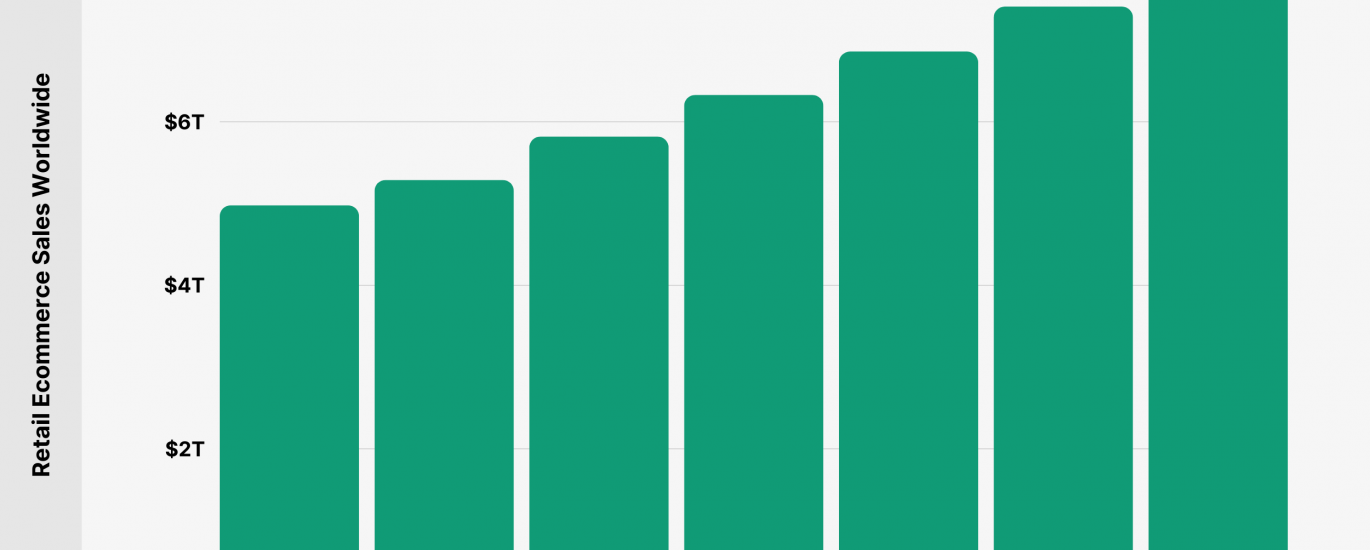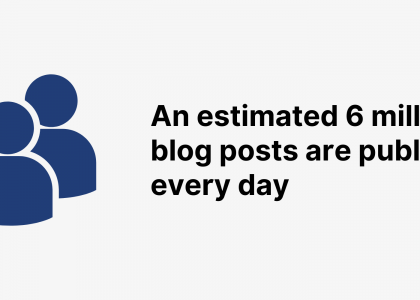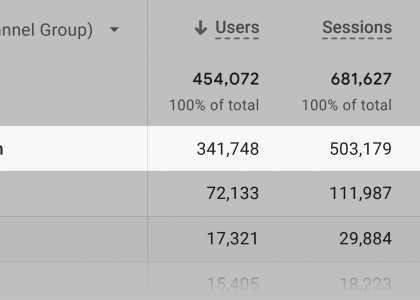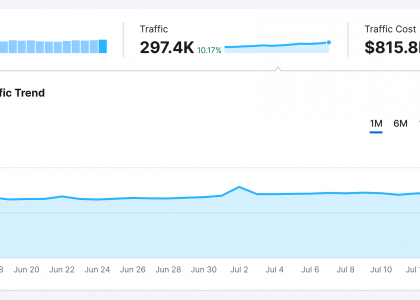Ecommerce has transformed the retail landscape. In fact, ecommerce is forecasted to capture 41% of retail sales worldwide by 2027, up from only 18% back in 2017.
From the convenience of fast and free shipping to wide product choice, more consumers opt to shop online.
To help you learn about the dynamic landscape of online shopping, we’ve curated a list of recent ecommerce statistics to know in 2024.
Let’s dive right in.
Here’s a quick overview of what you’ll find on this stats page:
General Ecommerce Statistics
Online Shopping Behavior Statistics
Mobile Ecommerce Statistics
Social Media Ecommerce Statistics
General Ecommerce Statistics
What’s the share of ecommerce in retail sales worldwide and in the US? What are the top ecommerce categories? In this section, we’ll cover recent stats on retail ecommerce sales worldwide and in the US.
Retail ecommerce sales worldwide are estimated to reach $6.33 trillion in 2024, that is an 8.76% year-over-year increase (eMarketer)
Here’s a detailed breakdown of retail ecommerce sales growth since 2021:
Year
Retail Ecommerce Sales Worldwide
2021
$4.98 trillion
2022
$5.29 trillion
2023
$5.82 trillion
2024
$6.33 trillion
2025
$6.86 trillion
2026
$7.41 trillion
2027
$7.96 trillion
Ecommerce accounts for 20.1% of total retail sales worldwide in 2024. Ecommerce share in global retail sales is forecasted to reach 22.6% by 2027 (eMarketer)
Here’s a table with ecommerce share of total retail sales worldwide since 2021:
Year
Retail Ecommerce Worldwide (% Share of Total Retail Sales)
2021
18.8%
2022
18.7%
2023
19.4%
2024
20.1%
2025
21.0%
2026
21.8%
2027
22.6%
Retail ecommerce sales in the US amounted to $1.1 trillion in 2023, up from $1.03 trillion in 2022 (U.S. Census Bureau)
In Q1 2024, US retail ecommerce sales reached $289.2 billion.
Here’s a detailed breakdown of US retail ecommerce sales since 2018:
Year
US Retail Ecommerce Sales
2018
$512.57 billion
2019
$599.51 billion
2020
$787.93 billion
2021
$870.71 billion
2022
$1.03 trillion
2023
$1.1 trillion
Q1 2024
$289.2 billion
As of Q1 2024, ecommerce represents a 15.89% share of all retail sales in the US (U.S. Census Bureau)
Here’s a table with ecommerce share of US retail sales worldwide since 2018:
Year
US Retail Ecommerce (% Share of Total Retail Sales)
2018
9.63%
2019
10.97%
2020
14.02%
2021
13.22%
2022
14.54%
2023
15.28%
Q1 2024
15.89%
Amazon accounts for 40.4% of total retail ecommerce sales in the US, representing $491.65 billion in gross sales in 2024. To put it in perspective, Walmart’s retail ecommerce sales amounted to $83.18 billion in 2024 (eMarketer 1, eMarketer 2)
Year
US Amazon Retail Sales
Share of Total US Retail Sales
2020
$309.48 billion
37.9%
2021
$364.55 billion
38.0%
2022
$398.13 billion
38.3%
2023
$444.76 billion
39.6%
2024
$491.65 billion
40.4%
2025
$540.29 billion
40.9%
Amazon, eBay, and Walmart are the top 3 most popular ecommerce sites ranked by US monthly visits as of November 2023 (eMarketer)
Here’s a full ranking of top 10 ecommerce websites in the US ranked by number of monthly visits:
Website
Monthly Visits
amazon.com
2.08 billion
ebay.com
543.8 million
walmart.com
492.7 million
etsy.com
276.2 million
target.com
217.4 million
t-mobile.com
202.3 million
homedepot.com
191.0 million
att.com
173.8 million
bestbuy.com
155.9 million
apple.com
150.3 million
By 2027, grocery is forecasted to be the largest ecommerce category in the US, accounting for 19.0% of ecommerce sales, closely followed by apparel and accessories (18.7%), computer and consumer electronics (15.5%), furniture and home furnishings (14.6%) (eMarketer)
Clothing, shoes, and beauty products are the top 3 digital purchases in the US (eMarketer)
Here’s a complete list of the most popular digital purchases in the US:
Product Category
Share of US Digital Buyers (who made a purchase in the past month)
Clothing
67.1%
Shoes
44.0%
Beauty products
43.1%
Food and beverages (non-alcoholic)
41.8%
Household supplies
40.9%
Toys and games
37.1%
Books, music, and videos
36.7%
Pet products
35.7%
Pharmacy and health
35.3%
Accessories
31.8%
56.1% of internet users worldwide aged 16 to 64 make an online purchase each week (DataReportal)
On average, annual spending per online shopper worldwide reached $1,109 in 2023. In the US, the average online spend per buyer is $2,700 (DataReportal)
Electronics is currently the largest consumer product category with the most ecommerce spending in the US, accounting for 781.3$ billion in sales in 2023 (DataReportal)
Here’s a detailed breakdown with largest product categories by annual consumer spending in the US:
Product Category
Annual Ecommerce Spending (B2C, US)
Electronics
$781.3 billion
Fashion
$673.6 billion
Food
$370.7 billion
Beverages
$209.3 billion
DIY & Hardware
$201.8 billion
Furniture
$188.0 billio
Physical Media
$182.7 billion
Beauty & Personal Care
$151.2 billion
Tobacco Products
$104.4 billion
Toys & Hobby
$80.53 billion
Household Essentials
$72.98 billion
Over-the-Counter Pharmaceuticals
$59.65 billion
Luxury Goods
$54.42 billion
Eye-Wear
$23.48 billion
Online Shopping Behavior Statistics
What are the online purchase drivers? Why do consumers abandon their shopping carts? In this section, we’ve curated a list of online shopping behavior statistics to answer these questions.
Free delivery (50.6%), coupons and discounts (39.3%), and easy returns policy (33.2%) rank as the top 3 online purchase drivers among internet users worldwide (16-64 years old) (DataReportal)
Here’s a complete ranking of online purchase drivers:
Factor
Share of Internet Users
Free delivery
50.6%
Coupons and discounts
39.3%
Easy returns policy
33.2%
Simple online checkout
30.6%
Customer reviews
30.5%
Next-day delivery
30.4%
Loyalty points
27.2%
Cash on delivery
19.8%
Social likes and comments
19.4%
Eco-friendly credentials
18.9%
Click and collect
17.7%
Interest-free payments
14.7%
Guest checkout
11.2%
Social buy buttons
10.8%
Exclusive content or services
10.2%
48% of US consumers state that their main reason for abandoning shopping carts during the checkout process are high extra costs (shipping, tax, fees).
Other common reasons for abandoning a shopping cart include a requirement to create an account (26%) and security concerns with sharing credit card information (25%) (Statista)
Here’s a complete list of popular reasons why US consumers abandon their shopping carts:
Reason
Share of Respondents
Extra costs too high (shipping, tax, fees)
48%
Requirement to create an account
26%
I didn’t trust the site with my credit card information
25%
Delivery was too slow
23%
Too long / complicated checkout process
22%
I couldn’t see / calculate total order cost-up front
21%
Returns policy wasn’t satisfactory
18%
Website had errors / crashed
17%
There weren’t enough payment methods
13%
The credit card was declined
9%
For 40.4% of US consumers marketplaces were a starting point in their online shopping journeys in 2023. Another 29.7% of online shoppers stated use of search engines, followed by preferred brand’s website (18.2%) and social media (9.9%) (Attest)
Lower prices (29%), convenience (21%), free shipping (14%), product availability (7%), and good customer service (7%) are the top 5 reasons consumers choose to shop online (Feedvisor)
More than 7 in 10 US adults believe home delivery, free shipping, and in-stock products are necessary online shopping attributes for conveniences (eMarketer)
Online Shopping Attribute
Share of Respondents
Ordering for home delivery
81%
Free shipping
76%
In-stock products
71%
Package tracking
68%
Fast shipping
66%
Free returns
63%
Website filtering and search tools
62%
Mobile shopping
61%
Saving products in cart to come back later
60%
Ease of finding discounts
56%
Comparing prices across sites
54%
Mail-in returns
51%
Comparing products across sites
49%
Saving checkout details in a user profile
47%
Generous return windows
43%
66% of consumers cite free shipping as a key online shopping feature (PYMNTS)
5 in 10 consumers take into account the ease of checkout process on a retailer’s website or app when making a decision where to shop online (PYMNTS)
<>As of April 2024, the average shopping cart abandonment rate worldwide is 73.27% (Dynamic Yield)
Mobile Ecommerce Statistics
With the increased usage of smartphones, more consumers are looking for mobile-first online shopping experiences. These stats will help you understand the mobile commerce landscape.
29.9% of internet users worldwide (16-64 years old) buy something online each week via a mobile phone (DataReportal)
Revenue from mobile ecommerce sales worldwide reached $2.07 trillion in 2024, accounting for 57% of total ecommerce sales (Statista)
Here’s a table with mobile commerce revenue worldwide, including a share of total retail ecommerce since 2017:
Year
Mobile Commerce Worldwide
Share of Total Retail Ecommerce
2017
$500 billion
40%
2018
$660 billion
43%
2019
$810 billion
46%
2020
$1.1 trillion
48%
2021
$1.4 trillion
49%
2022
$1.48 trillion
52%
2023
$1.71 trillion
54%
2024
$2.07 trillion
57%
2025
$2.51 trillion
59%
2026
$2.74 trillion
60%
2027
$3.02 trillion
62%
2028
$3.35 trillion
63%
Mobile ecommerce accounts for nearly half (44.1%) of US online sales in 2024, representing $564.1 billion in order value.
By 2027, mobile commerce is forecasted to reach $856.4 billion in sales in the US, accounting for 49.79% of online sales (eMarketer)
Here’s a detailed breakdown of mobile ecommerce growth in the US since 2023:
Year
Online Sales (Mobile Devices)
Online Sales (Dekstop/Laptop)
Online Sales (Total, US)
2023
$491.1 billion
$645.8 billion
$1.137 trillion
2024
$564.1 billion
$692.2 billion
$1.256 trillion
2025
$648.0 billion
$744.0 billion
$1.392 trillion
2026
$744.7 billion
$800.3 billion
$1.545 trillion
2027
$856.4 billion
$863.3 billion
$1.720 trillion
There are an estimated 161.6 million mobile wallet users in the US alone, accounting for 64.9% of US smartphone users (eMarketer)
61% of American adults consider mobile shopping as a necessary online shopping attribute (eMarketer)
The average conversion rate for online purchases made mobile devices was 2% vs. 3% for desktops (eMarketer)
In April 2024, traffic from mobile devices to ecommerce sites accounted for 73% share (Dynamic Yield)
Social Media Ecommerce Statistics
From brand and product discovery to direct purchases, social media has transformed the ecommerce industry. These statistics offer valuable insights about social commerce.
50.3% of social media users in the US have made at least one purchase via social channel in 2024 (eMarketer)
Here’s a detailed breakdown of US social buyers since 2021:
Year
US Social Buyers
Share of Social Media Users
2021
96.9 million
46.6%
2022
102.6 million
48.4%
2023
106.8 million
49.5%
2024
110.4 million
50.3%
2025
113.2 million
50.6%
2026
115.8 million
50.7%
2027
118.1 million
50.9%
US social commerce sales reached $67.06 billion in 2023, up from $26.97 billion in 2020 (eMarketer)
Social commerce sales in the US are forecasted to grow to $144.52 billion by 2027.
Average social commerce spending per buyer in the US amounted to $627.8 in 2023, up from $337.7 in 2020. Sales per buyers forecasted to reach $1,223.7 by 2027 (eMarketer)
23.1% of social commerce users in the US are 25 to 34 years old (eMarketer)
Here’s a detailed breakdown of US social buyers by age group:
Age Group
Share of US Social Buyers
14-17
7.5%
18-24
16.8%
25-34
23.1%
35-44
19.1%
45-54
13.5%
55-64
10.4%
65+
9.6%
Facebook (49%), YouTube (46%) and Instagram (40%) are social media platforms where American adults are most likely to make direct purchases (eMarketer)
Among Gen Z (ages 18-26) in the US, Instagram (71%), YouTube (68%) and TikTok (68%) are leading destinations for social commerce (eMarketer)
30% of American adults reported they have purchased a product from a brand founded by a social media influencer. Among Gen Z and millennials that’s as much as 53% and 47%, respectively (Morning Consult)
Among US consumers, YouTube is a go-to social media platform to start their search when shopping online. 13% of US adults start their search on YouTube (Jungle Scout)
Other popular networks to start a search when shopping online include Facebook (10%), TikTok (7%), Instagram (7%), and Pinterest (5%)
50% of consumers say they discover new products on social media (Salesforce)
59% of shoppers report they have made a purchase on social media (Salesforce)
The post 36 Up-To-Date Ecommerce Statistics appeared first on Backlinko.






